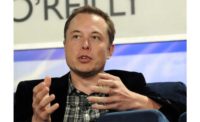Billionaire Elon Musk has created a stir more than once by suggesting his company, Tesla, will enter the residential HVAC market. Musk’s claim is the company will upsize the equipment it uses in its electric cars for home use. While less ambitious than his plans to colonize Mars, and lacking in almost any details, the idea has drawn considerable interest from the public and those in the HVAC industry.
But is Tesla’s HVAC system really that innovative? Is it even that good? According to the latest Auto Reliability Survey findings from Consumer Reports, the answer to that second question is not really.
“Tesla doesn't fare so well in our rankings, in part because of the reliability issues owners reported to us on heat pumps and air conditioning in their Teslas,” said James McQueen, communications specialist for Consumer Reports.
Many consumers have complained online that Tesla’s in-car heat pumps underperform in cold climates. Tesla launched its Octovalve heat pump system in March 2020. The goal of the new system was to allow Tesla to maintain efficiency as it started producing larger vehicles, such as the Model Y SUV.
Marketing team lead, Fire and Ice Heating and Air Conditioning
HVAC Technology Already Exists
All this tech is cutting edge for cars. But it’s less so for houses, said Mark Wilson, marketing team lead at Fire and Ice Heating and Air Conditioning in Columbus, Ohio.
“Some of the articles out there trend toward hyperbole — that it’s something brand new that we’ve never seen before,” Wilson said. “It might move the technology forward somewhat, but it is technology that is already out there.”
Wilson described the Tesla HVAC system as a high-efficiency ductless mini split with better filtration than is found in many units on the market. The filtration is another key element of the Tesla system. Tesla includes a HEPA filter as part of its HVAC system.
Scott Merritt, owner of Fire and Ice, said most consumers don’t understand the different types of filtration. Merritt said they know HEPA “means something good,” but they don’t understand how it works or what the tradeoffs are. Wilson said that higher MERV filters already start catching most contaminants.
Tesla also offers what it calls “Bioweapon Defense Mode.” This setting pressurizes the car’s cabin to minimize the amount of outside air. While useful is situations such as a California wildfire, the dramatic name shows why people pay attention when Musk talks about any subject, such as HVAC.
Looking for Opportunities
Merritt said whenever one of the world’s richest people talks about something, it’s worth listening to, especially if it’s in your field. Wilson said that while Fire and Ice works to promote advanced HVAC systems to consumers, Tesla obviously has a much bigger platform. The industry has seen before how a large media presence can change consumer opinions about HVAC technology. There were smart thermostats before Nest, but the device’s creators used the design and marketing techniques they learned at Apple to capture the public’s attention.
There may be opportunities for HVAC contractors if Tesla does enter the residential HVAC market, Merritt said. Some HVAC contractors have expanded their services by installing home charging connections for Teslas. If Tesla did get into the home market, the company may seek out established contractors to partner with. However, Tesla is famous for not creating a franchise dealer network to sell its cars, going so far as fighting to change state laws.
Even if a direct relationship with Tesla never materializes, the increased interest in high-end HVAC should be good for the industry. Merritt said he will continue to keep watching the latest developments. When and if those will take place remains a guessing game, as do many matters involving Elon Musk.








